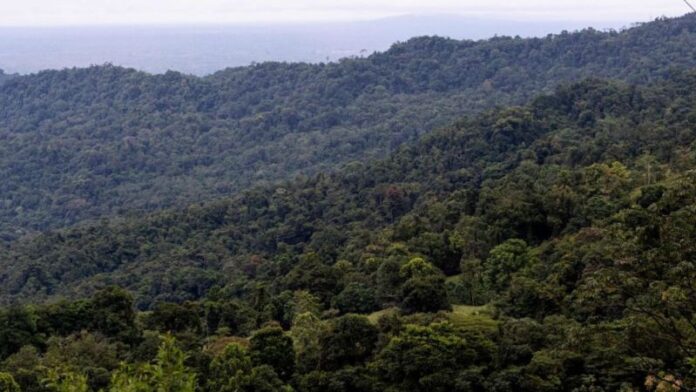(CNN Spanish) – The exuberance of Costa Rica’s forests and its biodiversity seduce thousands of tourists who visit the country every year, but they also attract drug traffickers who seek out unpopulated mountains to transfer drugs.
According to the US State Department, between 2020 and 2022 Costa Rica was the number one transshipment point for cocaine traveling from South America to the United States and Europe; and in 2023 it ranked second after Mexico.
Adriana Groot and Hilmar Noble, American tourists, say that they are not surprised that the dense mountains in some areas of the country are targeted by drug traffickers for the transfer of cocaine, but that this does not change the positive image they have of Costa Rica and that they feel safe.
“We came to breathe fresh air, to relax. Costa Rica is not the only nation with this threat,” says Groot. Noble, her husband, nods and adds: “My opinion about the country is not going to change, definitely not.”
Both met at the entrance to the Braulio Carrillo National Park, one of the largest in the country, with Patrick Weyten, a Belgian tourist, who agrees when referring to Costa Rica as “a beautiful country, I love its flora and fauna, I have not unsafe feeling anywhere.” From their cell phones, the group shares photographs of the wild animals they have seen on their journey.
The visit figures reflect this preference, despite the growing violence due to the fight for territories between criminal groups linked to drug trafficking.
The Costa Rican Tourism Institute (ICT) reported that, by air, tourist arrivals from January to July of this 2024 increased by 13.5% compared to last year.
The Chamber of Commerce, Industry and Tourism of Limón in the Caribbean (Ccitul) insists that, to maintain the trend, it is important to reinforce measures that stop drug trafficking and that they coordinate efforts with the Government for this.
According to the Judicial Investigation Organization (OIJ), and with figures until October 1 of this year, after San José, the capital, Limón registers the highest number of the 426 homicides linked to the settling of scores for drug trafficking. Last year these accounted for more than half of the 907 homicides reported in Costa Rica, the deadliest year since records began.
The president of Ccitul, Rubén Acón, assures that “the parks in the country are a route that allows people linked to these illicit activities from planting to moving with all the ease in the world.”
According to the National System of Conservation Areas of Costa Rica, more than 50% of the territory is covered by natural ecosystems and about 27% is conserved under the System of Protected Areas (SAP). The country has 5% of the world’s biodiversity.
The administration of the Braulio Carrillo National Park reported that there are currently 18 park rangers to protect more than 50,000 hectares in this area alone. He adds that, due to the rotation system, there are always at least three during the rest period, that is, those 18 become 15 park rangers.
The Ministry of Environment and Energy (Minae) says that it has the budget assigned to the SINAC Department of Control, Prevention and Protection for each of the Conservation areas, but no extraordinary budget to address this issue.
Ronald Alfaro, political scientist and researcher at the University of Costa Rica, points out that the situation requires a strategy that goes beyond pursuing criminals.
“It is a challenge in two senses: on the one hand, combating crime; and, on the other, not putting protected areas at risk from an environmental point of view because they are a very important source of income for tourism.”
Security Minister Mario Zamora emphasized that measures are being implemented in several directions, which includes operations on sea and land with a greater number of personnel and increasingly specialized police resources. Zamora assured CNN that, with the collaboration of the United States, it is expected that all national ports will begin with scanners to detect drugs in 2025.
The official specified that the strategy includes three scanners in the main port in Limón, through which 80% of the country’s exports leave; another in a nearby port; and one more in Caldera, the main port on the Costa Rican Pacific.
“Later, two more scanners will be added to land routes and we have received cooperation from the United States to incorporate 10 portable scanners with the same objective,” said the minister.
Minae reported that in the coming months they hope to fill 28 park ranger vacancies and recruit 25 more. He stressed that a project is being studied so that they have a police profile and create the police for the control and protection of natural resources.

